






For a simple, attractive flower arrangement, just use three garden elements: filler, focal point, and accent. Grab a favorite vase, and follow along with blooms and foliage from your garden.
As an example, we created the arrangement shown here, which consists of 'Piedmont Gold' hosta, 'Tropicana' rose, and 'Navigator' penstemon.
The instructions below explain how you can create an infinite variety of arrangements using three simple elements.
Slide Show: Best Perennial Cut Flowers
Slide Show: Best Annual Cut Flowers
continue reading below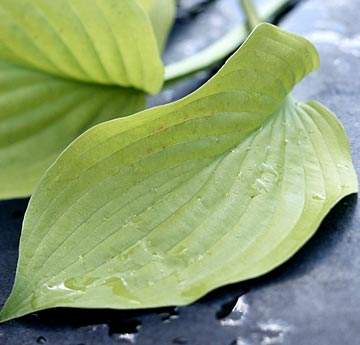
Start with several stems of filler. They not only fill in with color but hold blooms in place. Florists often use fern leaves and baby's breath to do this job. Here, large, smooth hosta leaves form both a base and a background.
Try these 10 perennials for great bouquet additions!
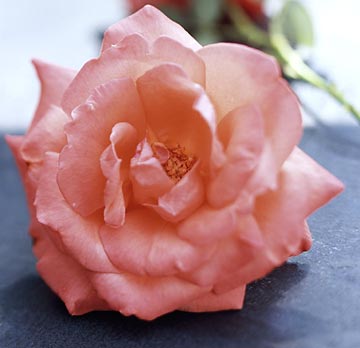
Add a focal point. This is the element that makes you go ahh! Often focal points are the largest blooms with a commanding shape or color. An odd number of these flowers or leaves creates the most pleasing combination.
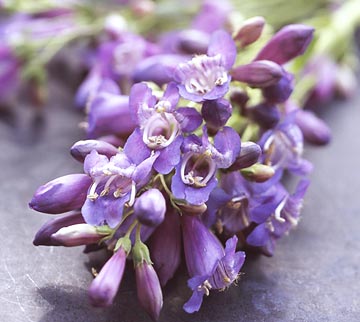
Add the accent. Usually smaller than the focal point, an accent plays a complementary role. Look for a flower or leaf that has a texture, shape, or color different from your filler or your focal point.
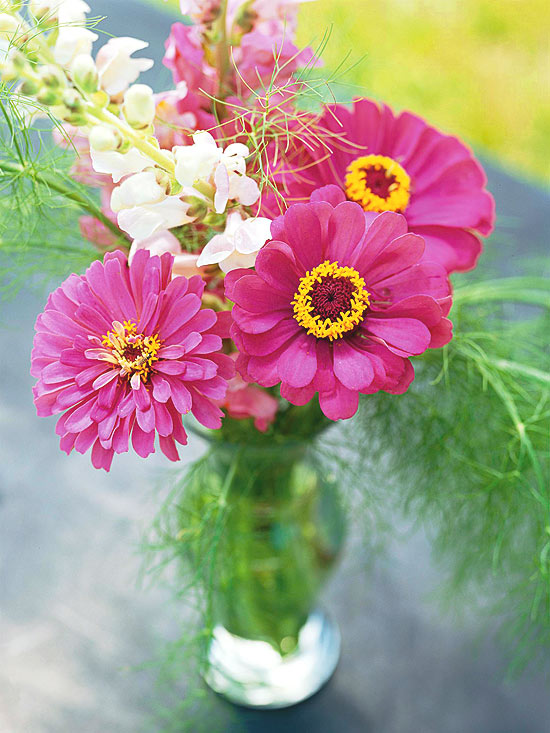
As a filler, fennel leaves (Foeniculum officianalis) add an airy touch to the strong bright pink zinnia focal point. White and pink snapdragons (Antirrhinum majus) add height and structure to this early summer bouquet.
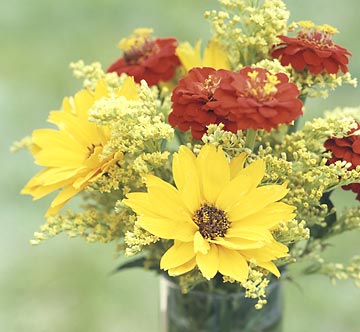
Clear, vibrant colors come together in a dazzling posy of hot hues. Goldenrod (Solidago spp.) stems lay a foundation for the cheerful yellow Helianthus focal point. Miniature zinnia accents in brilliant vermillion provide the finishing touch.
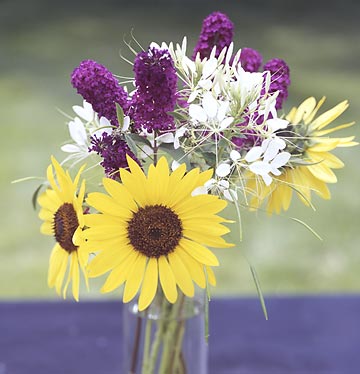
Few flowers radiate instant charm like a sunflower (Helianthus annus). Smaller-bloomed varieties such as this 'Paul Bunyan' are excellent cut-flower focal points. Here, we've accented with complementary-colored deep purple butterfly bush (Buddleia davidii 'Black Knight'). Finely textured white cleome (Cleome hassleriana) creates a striking contrast as a filler.
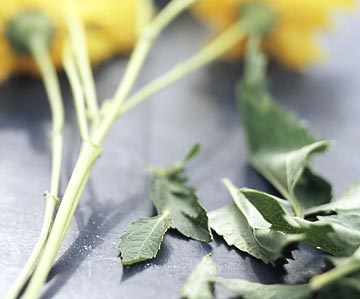
1. Start clean. Before adding stems to your vase, snip off anything that will be in the water that isn't a stem. Leaves and flower buds rot quickly underwater, producing an odor and sapping resources from your blooms and foliage.
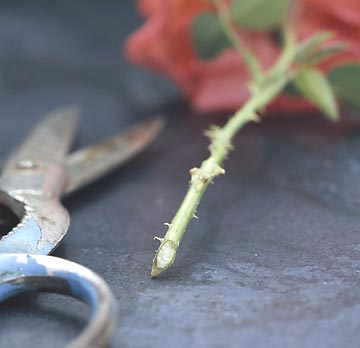
2. Snip daily. At each water change, use a sharp knife to cut 1/2 to 1 inch off the base of each stem. This allows the stem to immediately draw fresh water. Cut at an angle so there's a larger surface area in contact with the water.
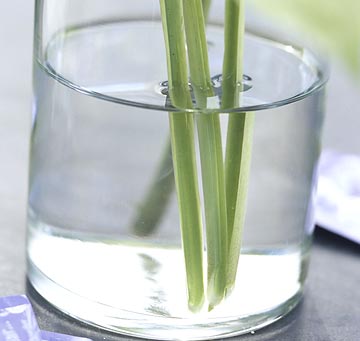
3. Keep it fresh. As quickly as overnight, the water in your vase can turn sour. Change the water daily, and add a pinch of floral preservative (available from your local florist) to the water to provide nutrients to the blooms and retard algae growth in the water.

Once you've learned the basics of making cut flower bouquets, use the simple tips below to get the most from your cut flowers.
Slide Show: Best Annual Cut Flowers
Slide Show: Best Perennial Cut Flowers
Searchable Plant Finder
Copyright © www.100flowers.win Botanic Garden All Rights Reserved